
|
|
Yoshikane Katana with
Gold Inlay ~ 2 & 3 Body Cutting Test
by Yoshishige 1670 & 1674 AD
Saya-gaki by Tanobe Sensei (Tanzan)
NBTHK Hozon

(tsuba pictured above is not original (not included) - however dragon tsuba below is original & included)

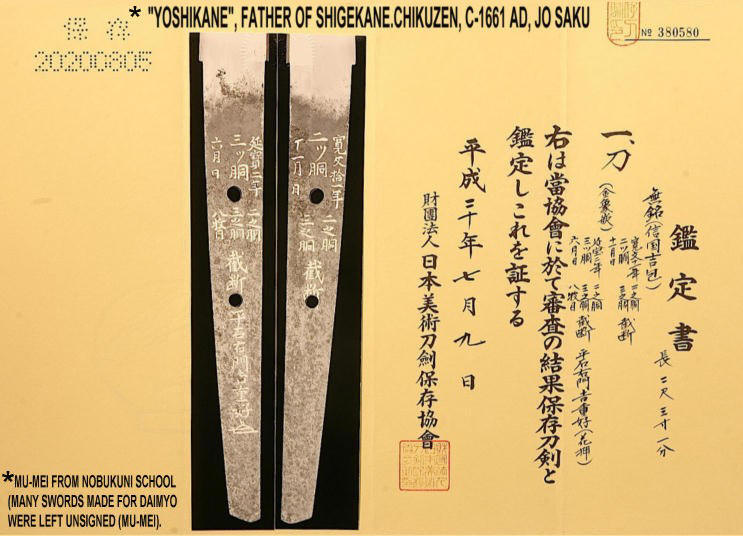
This is a Mu-mei (unsigned) blade by Nobukuni Yoshikane (Father of Shigekane) and is circa 1661 AD as determined by the N.B.T.H.K.
Fujishiro's Shinto book page 79... states Yoshikane Nobukuni Genna 1681, Chikuzen Province, Shinto period, Jo-Saku. His ancestors lived in Buzen Usa, he is the son of Nobukuni Yoshitsugu and father Nobukuni Shigekane, there works are quite similar. He is called Sukezaemon. Yoshikane died in Genroku 1693/8/29. His works are gonome midare with sunagashi and majirira.
In 1720 (Kyōhō gonen) Nobukuni Yoshikane's son (Shigekane) was selected (In a competition / survey) along with Yasuyo and Masakiyo of Satsuma by Shogun Yoshimune*. He was ordered to go to Edo where he made a sword for the personal use of Shogun Yoshimune. This is an exceptionally high distinction of honor as the Shogun could have chosen anyone in the country. As a result of his superb workmanship he was granted permission to use the AOI ichiyo (MON) on the nakago of his swords. Very few swords of his are seen with this MON.
*Tokugawa Yoshimune (徳川 吉宗 Tokugawa Yoshimune, November 27, 1684 - July 12, 1751) was the eighth shogun of the Tokugawa shogunate of Japan, ruling from 1716 until his abdication in 1745. He was the son of Tokugawa Mitsusada, the grandson of Tokugawa Yorinobu, and the great-grandson of Tokugawa Ieyasu.
Yoshimune succeeded to the post of the shogun in Shōtoku 1 (1716). His term of his shogunate would last for 30 years. Yoshimune is today considered the best of the Tokugawa shoguns. Yoshimune established the gosankyo to augment (or perhaps to replace) the gosanke. Two of his sons, together with the second son of his successor Ieshige, became the founders of the Tayasu, Hitotsubashi and Shimizu lines. Unlike the gosanke, they did not rule domains. Still, they remained prominent until the end of Tokugawa rule, and some later shoguns were chosen from the Hitotsubashi line. Yoshimune is known for his financial reforms. He dismissed the conservative adviser Arai Hakuseki and he began what would come to be known as the Kyōhō Reforms. Although foreign books had been strictly forbidden since 1640, Yoshimune relaxed the rules in 1720, starting an influx of foreign books and their translations into Japan, and initiating the development of Western studies, or rangaku. In 1745, Yoshimune retired, taking the title Ōgosho and leaving his public post to his oldest son. The title is the one that Tokugawa Ieyasu had taken on retiring in favor of his son Hidetada, who in turn took the same title on retirement. Yoshimune died in on the 20th day of the 5th month of the year Kan'en 4.
Works by Shigekane are very exuberant and his hamons seem to possess what is called vice-viva (means a "living spirit within" in French). This sword by Yoshikane has approx 95% polish with only light surface abrasion, which most can be easily removed with a light polish (we will cover this expense if ordered at time of purchase). The sword has JO JO (Upper Upper Class) polish with a great deal of attention having been given to the Hamon. This class of polish is exceptionally difficult to obtain to obtain today therefore a full polish is not recommended. Yoshikane was from Chikuzen province and is son of Nobukuni Yoshitsugu. His blades are classified as having superb sharpness. His son's works resemble those by some of the Hizen masters as well as Masakiyo. Three of the most important and rare aspects of Yoshikane works are: 1) He was personally selected from amongst a great number of sword makers to produce a blade for the Shogun, 2) The exuberance and beauty of his blades are seldom seen, 3) The five body cutting test at special request of the tester is only something we have seen on this blade. As an investment, swords with cutting tests are only second to Juyo for desirability. In over forty years of sword collecting we only seen three ‘5 body cutting test’ swords.

~ Sayagaki translation ~
Chikushu (Province) (Chikuzen - town) Nobukuni Yoshikane, Mu-mei
Reverse like Large Gonome Hamon
Chikuzen Nobukuni above all characteristics of Yoshikane is seen very clearly.
On front and back of Nakago there are engravings in Kinzogan, which is cutting test year is
Kanbun 11 (1670) [2 body test] and Enpo 2 (1674) [3 body test].
Result of the test was a big surprise - Unbelievable sharpness of the blade.
The testers name: Hiraishi Umon Yoshishige
Blade length 2 shaku, 3 zun, 1 bu
Date of Sayagaki: Heisei 20 (2008) Late August
By: Tanzan (Tanobe Michihiro)
[Tanobe Sensei is Senior Manager of N.B.T.H.K. Tokyo, Japan]
Kakihan (Examined and recorded)


Tsuba signed - Naokazu
The dragon fittings are remarkable...

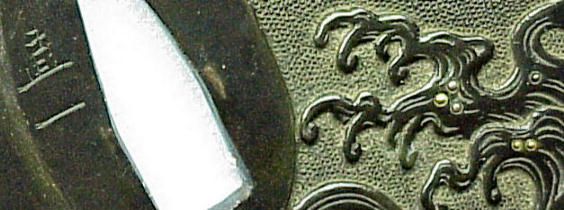
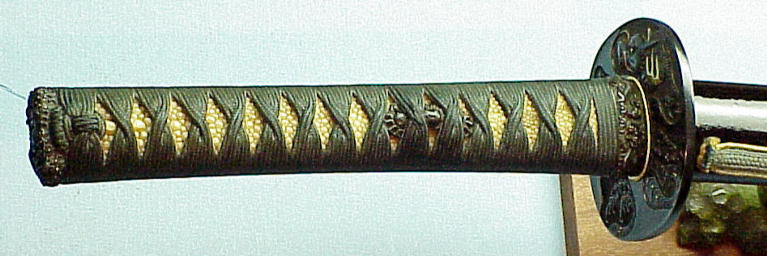


Fuchi-Kashira

Menuki



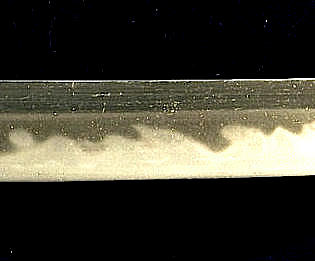

|
The Hada: is beautifully done Ko-Itame. The Hamon: Saka (slanted) gonome towards the machi as seen in several of the Ichimonji makers from the Fukuoka School. This hamon contains Ashi (streaks that go from valleys into Hamon), Yo (similar to foot prints) and kinsuji (streaking within hamon) and also some inazuma present. The Nie is very deep and lustrous. |
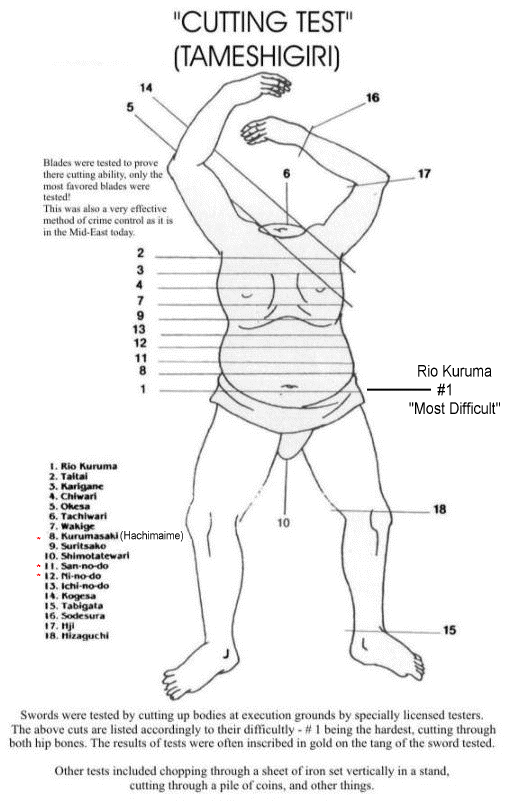
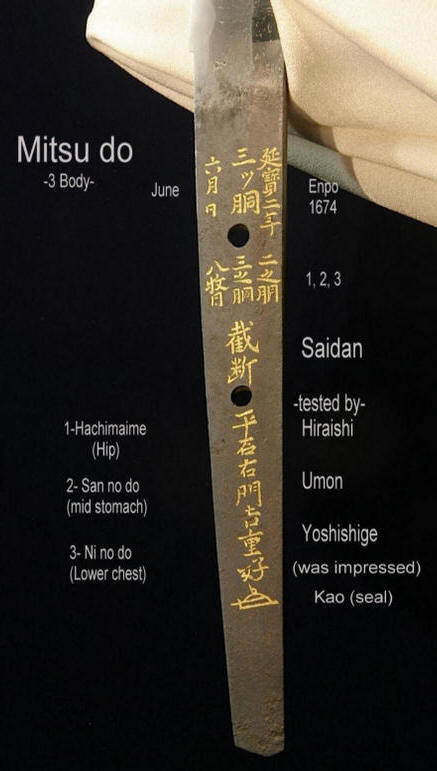
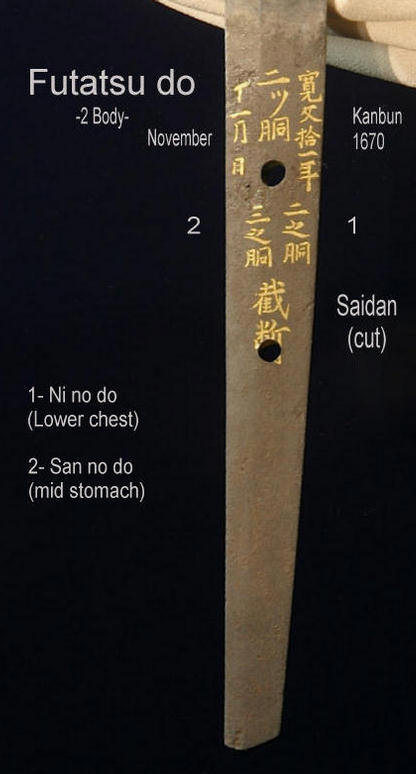
You may also view our CUTTING TEST BLADES SOLD IN THE PAST by clicking here
This Sword is not available for purchase.
If you wish to purchase a Japanese Sword please view our Nihon To for sale page or contact us directly via email, please include specifics of what you seek, i.e.: Katana, maker, era, price range etc.
Contact Matt: at 1(815) 465-6623, Tim: at 1(608) 315-0083 any time.
![]()
Pictures and content may not be copied without the express permission of samuraisword.com © 2013